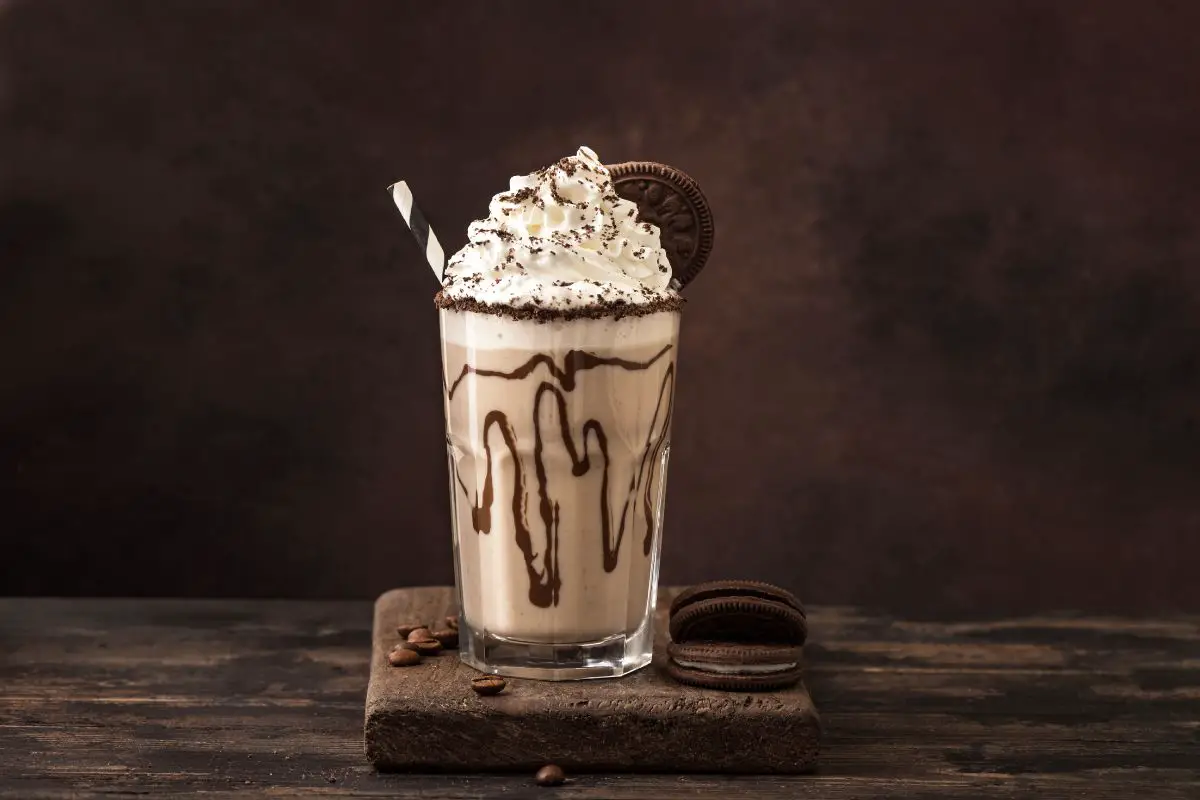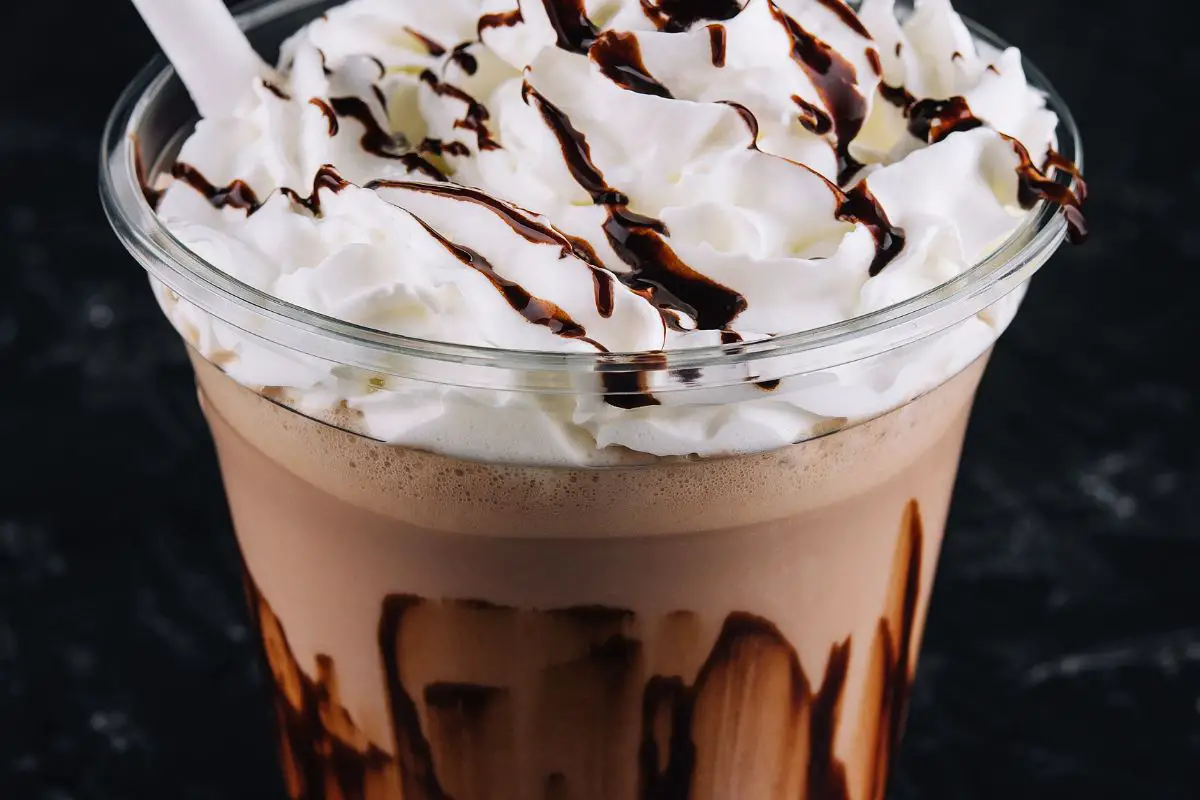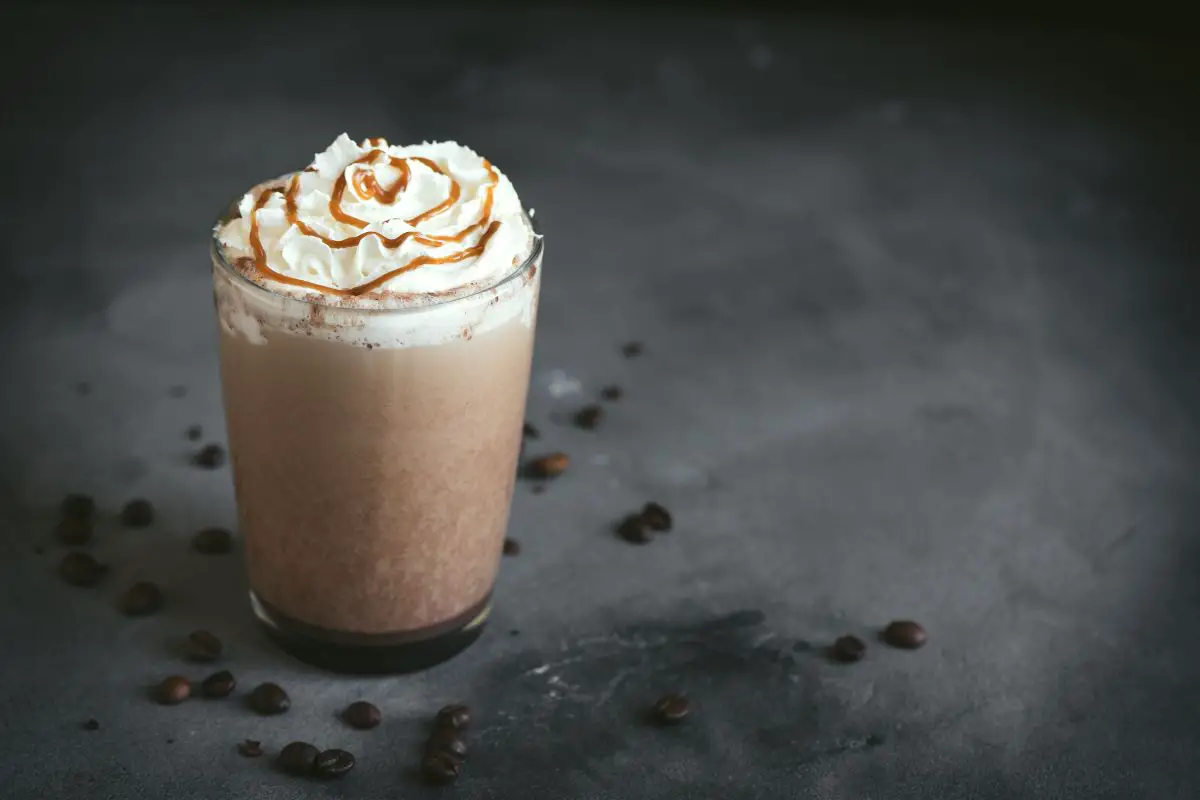In the realm of icy caffeinated beverages, two prominent contenders have emerged as favorites among coffee aficionados: the frappe and the Frappuccino.
These delectable concoctions, born from distinct cultural origins, offer a refreshing respite from the sweltering heat while delivering a delightful caffeine kick.

The frappe, originating from Greece, and the Frappuccino, created by the renowned coffee house chain Starbucks, may appear similar at first glance, but they possess nuanced differences that set them apart.
Understanding these disparities is essential for those seeking to indulge in these chilled delights.
This article aims to explore the disparities between a frappe and a Frappuccino, delving into their origins, ingredients, preparation methods, taste and texture variations, cultural significance, availability, and recommended personal preferences.
By examining these aspects critically and objectively, coffee enthusiasts can make informed decisions when selecting their icy coffee beverage of choice.
So, whether you crave the Greek charm of a frappe or the Starbucks’ signature Frappuccino, this article will guide you through the nuances, ensuring a safe and enjoyable coffee experience.
Key Takeaways
- Frappe originated in Greece in the late 1950s, while Frappuccino was created by Starbucks in the early 1990s.
- Frappe is made with instant coffee, water, sugar, and milk, while Frappuccino is made with freshly brewed coffee, milk, ice, and various flavors.
- Frappe has a lighter and airier texture, while Frappuccino has a thicker and creamier consistency.
- Frappe is a traditional coffee drink in Greece, while Frappuccino is associated with the Starbucks brand and seen as a trendy treat.
Origins of the Frappe and Frappuccino
The frappe originated in Greece in the late 1950s, while the frappuccino was created by Starbucks in the early 1990s. The frappe is a cold coffee beverage that is typically made with instant coffee, water, sugar, and milk. It is prepared by vigorously shaking these ingredients together with ice until a frothy consistency is achieved. The frappe gained popularity in Greece due to its refreshing nature, especially during the hot summer months.
On the other hand, the frappuccino is a trademarked beverage created by Starbucks. It is a blended coffee drink that combines coffee, milk, ice, and various flavors such as chocolate or caramel. The frappuccino is typically topped with whipped cream and drizzled with syrup for added sweetness. Starbucks introduced the frappuccino to cater to the growing demand for cold coffee beverages and to offer a unique and indulgent experience to its customers.
The difference between the frappe and the frappuccino lies in their origins and preparation methods. While the frappe is a simpler drink with basic ingredients, the frappuccino is a more elaborate and customizable beverage. In the subsequent section, we will delve into the differences in their ingredients and preparation methods, further highlighting the distinctions between these two coffee drinks.
Ingredients and Preparation Methods
Ingredients and preparation methods of a frappe and a frappuccino vary, allowing for a distinct and intriguing contrast in their flavors and textures.
In a frappe, the primary ingredients include instant coffee, milk, sugar, and ice. The coffee is typically mixed with cold milk and sugar, and then poured over ice. The mixture is then vigorously shaken or blended to create a frothy texture. The result is a refreshing and creamy beverage with a strong coffee flavor.
On the other hand, a frappuccino is made with freshly brewed coffee, milk, sugar, and ice. The coffee is brewed and then chilled before being blended with milk, sugar, and ice. Additional flavorings and toppings, such as syrups, whipped cream, and drizzles, are often added to enhance the taste and appearance of the frappuccino. The end result is a more indulgent and decadent beverage with a smoother texture.
These different preparation methods contribute to the distinct taste and texture differences between a frappe and a frappuccino. The shaking or blending of a frappe creates a lighter and airier texture, while the blending of a frappuccino produces a thicker and creamier consistency.
The subsequent section will explore these taste and texture differences in more detail.
Taste and Texture Differences

Taste and texture variations arise due to the contrasting ingredients and preparation techniques employed in the creation of frappes and frappuccinos.
Frappes typically consist of a mixture of instant coffee, milk, sugar, and ice blended together until smooth. The result is a creamy and frothy beverage with a slightly sweet and strong coffee flavor. Frappes often have a lighter texture compared to frappuccinos, with a more pronounced coffee taste due to the use of instant coffee.
On the other hand, frappuccinos are made with espresso shots, milk, sugar, and ice blended until creamy and smooth. The use of espresso gives frappuccinos a bolder and richer coffee flavor compared to frappes. The texture of frappuccinos is usually thicker and more velvety, similar to a milkshake, due to the addition of espresso shots and the blending process.
These taste and texture differences reflect the distinct preferences of individuals. While frappes offer a lighter and sweeter coffee experience, frappuccinos provide a stronger and more robust flavor profile. Understanding these variations allows coffee enthusiasts to choose the beverage that aligns with their personal taste preferences.
Moving forward, it is also important to explore the cultural significance of frappes and frappuccinos, shedding light on their popularity and impact in different regions.
Cultural Significance
Cultural significance plays a pivotal role in understanding the widespread appeal and influence of frappes and frappuccinos. These beverages have become more than just drinks; they have become symbols of social status and lifestyle choices.
Frappes are deeply rooted in Greek culture and are considered a traditional coffee drink. They are often enjoyed in outdoor cafes, where people gather to socialize and relax. Frappuccinos, on the other hand, were introduced by Starbucks in the 1990s and quickly gained popularity in the United States and around the world. They have become synonymous with the Starbucks brand and are seen as a trendy and indulgent treat.
Frappes and frappuccinos have also become cultural icons in their respective countries. In Greece, frappes are not only enjoyed as a refreshing beverage, but they are also seen as a symbol of Greek identity and pride. In the United States, frappuccinos have become a part of American pop culture, often associated with urban lifestyles and the ‘coffee shop culture.’
Understanding the cultural significance of these beverages is important as it helps explain their widespread availability and variations. Frappes and frappuccinos have evolved to cater to different tastes and preferences, with variations such as mocha, caramel, or vanilla flavors. This cultural significance has also led to the development of specialized equipment and techniques for making these beverages, ensuring that they are prepared and served in a consistent and high-quality manner.
Availability and Variations

The availability and variations of frappes and frappuccinos reflect the adaptability of these beverages to different cultural preferences and consumer demands. These drinks can be found in cafes, coffee chains, and even fast-food restaurants worldwide, making them easily accessible to a diverse range of individuals.
The variations in frappes and frappuccinos are plentiful, allowing consumers to customize their drinks according to their taste preferences. Some popular variations include adding flavors such as vanilla, caramel, or chocolate, as well as incorporating toppings like whipped cream, sprinkles, or chocolate drizzle. Additionally, variations in the base ingredients can be observed, with some frappes made with milk, while others use yogurt or ice cream.
Furthermore, the availability of frappes and frappuccinos extends to non-coffee versions, catering to those who do not consume caffeine or prefer alternative options. These non-coffee variations often use ingredients like fruit, tea, or even matcha to create refreshing and flavorful beverages.
Overall, the availability and variations of frappes and frappuccinos cater to a wide range of cultural preferences and consumer demands. Whether you prefer a classic coffee-based frappuccino or a fruit-infused frappe, there is a beverage to suit every taste.
Personal Preferences and Recommendations
When considering personal preferences and recommendations, it is important to explore the diverse range of flavors and ingredients available in frappes and frappuccinos. Both beverages offer a variety of options to cater to individual tastes and preferences. Frappes typically consist of a base ingredient such as coffee, tea, or fruit blended with milk, ice, and sweeteners. On the other hand, Frappuccinos are a trademarked line of blended beverages offered by Starbucks, which include coffee or crème-based options with various flavors and toppings.
To provide a comprehensive overview of the flavors and ingredients available in frappes and Frappuccinos, the following table presents a comparison:
| Flavors | Frappes | Frappuccinos |
|---|---|---|
| Coffee | Mocha, caramel, vanilla | Coffee, mocha, caramel |
| Tea | Matcha, chai | Green tea, chai |
| Fruit | Strawberry, mango | Strawberry, mango, peach |
| Chocolate | Chocolate, white chocolate | Chocolate, white chocolate |
| Other | Cookies and cream, peanut butter | Cinnamon dolce, pumpkin spice |
By examining the table, it is evident that both frappes and Frappuccinos offer a wide range of flavors to suit various preferences. Whether one prefers the classic taste of coffee or desires a fruity or chocolaty blend, there are options available to satisfy different cravings. It is essential to consider these choices when making personal recommendations to ensure that individuals can enjoy their beverage of choice safely.
Frequently Asked Questions
Are frappes and Frappuccinos the same thing?
Frappes and Frappuccinos are not the same thing. While both are cold blended beverages, Frappuccino is a trademarked term used by Starbucks, whereas frappe is a more general term used to describe similar beverages in other establishments.
Can I make a frappe or Frappuccino at home?
Yes, you can make a frappe or frappuccino at home. By using a blender, you can combine coffee, milk, sweeteners, and ice to create a refreshing beverage. However, be mindful of handling hot liquids and following proper blender safety precautions.
How many calories are in a frappe or Frappuccino?
A frappe or frappuccino can have varying calorie counts based on size, ingredients, and customization. It is important to check the specific nutritional information provided by the brand or establishment to determine the exact calorie content.
Are frappes and Frappuccinos always served cold?
Frappes and Frappuccinos are typically served cold, but there may be variations where they are served warm or at room temperature. It is important to note that the standard preparation involves serving them chilled.
Do frappes and Frappuccinos contain caffeine?
Frappes and Frappuccinos may contain caffeine, but it varies depending on the recipe and the specific brand. It is important to check the label or inquire with the barista to determine the caffeine content for each individual product.
Conclusion
The Frappe and Frappuccino have distinct origins, ingredients, and preparation methods.
While the Frappe originated in Greece as a blended iced coffee with sugar and milk, the Frappuccino was created by Starbucks in the 1990s, combining coffee, milk, and ice.
These beverages also differ in terms of taste and texture, with the Frappe being creamier and the Frappuccino having a stronger coffee flavor.
Both drinks hold cultural significance in their respective regions and have various availability and flavor variations.
In conclusion, the choice between a Frappe and a Frappuccino ultimately comes down to personal preference, but exploring the cultural and historical aspects of these drinks can add an ironic twist to your beverage selection.
Also read:
What is the Difference Between a Frappe and an Iced Coffee?